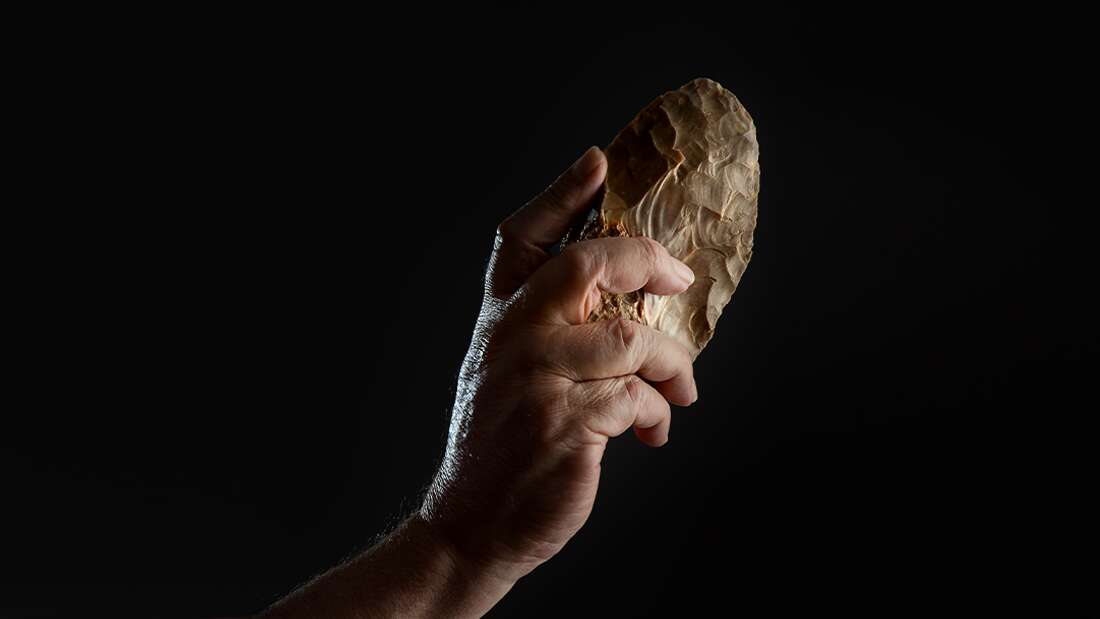人类的对生拇指最早出现在200万年前
人类的对生拇指最早出现在200万年前
The arrival of the opposable thumb was a big moment for humankind, and while its importance has long been agreed upon, questions have endured as to exactly when these beauties emerged. Now, new research published in the journal Current Biology has lifted the lid on these snazzy appendages, providing insights as to when thumbs became so dexterous, and how their emergence ties in with novel behaviors in humans.
对生拇指的出现对人类来说是一个重大的时刻,尽管人们对它的重要性早已达成一致,但关于这些美丽事物究竟何时出现的问题一直存在。现在,发表在《当代生物学》杂志上的一项新研究揭开了这些时髦的附体的面纱,提供了关于拇指何时变得如此灵巧的洞见,以及它们的出现是如何与人类的新奇行为联系在一起的。
The study used virtual muscle modeling to assess the biomechanics and efficiency of thumb morphologies across different species among our ancestors. The approach is the first time muscular as well as skeletal structure has been taken into account while examining thumb function. They then compared the ages of the thumb specimens and their dexterity to key steps in the development of human behavior to see what our ancestors were working with when they made significant leaps in their evolution.
这项研究使用虚拟肌肉建模来评估我们祖先中不同物种的拇指形态的生物力学和效率。该方法是第一次在检查拇指功能时将肌肉和骨骼结构考虑在内。然后,他们将这些拇指标本的年龄和它们的灵巧度与人类行为发展的关键步骤进行比较,以了解我们的祖先在进化过程中取得重大飞跃时是如何工作的。
"Our methodology integrates cutting-edge virtual muscle modeling with three-dimensional analysis of bone shape and size," said first author and hand biomechanics expert Alexandros Karakostis, in a statement. "This process includes the precise 3D study of the areas of the bones where muscles attach in life. Importantly, we were able to validate the predictions of our models by confirming that the differences observed between living taxa –chimpanzees and modern humans – reflect those reported from past experimental studies."
“我们的方法整合了尖端的虚拟肌肉建模和骨骼形状和大小的三维分析,”第一作者、手部生物力学专家Alexandros Karakostis在一份声明中说。“这一过程包括对生活中肌肉附着的骨骼区域的精确3D研究。重要的是,我们能够验证我们模型的预测,通过确认观察到的现存类群——黑猩猩和现代人类之间的差异,反映了过去实验研究的报告。”

Rachael Funnell
Their findings suggest that a key ingredient to the thumb’s success as an opposable digit first emerged around 2 million years ago. The remains of those given access to the dexterous upgrade lived in what we now call South Africa and likely belonged to either an early Homo species or the extinct hominin side branch Paranthropus robustus. Interestingly, the pivotal thumb adaptation wasn’t present in the hands of Australopithecines, according to the study, despite being alive around the same time as our opposable-thumb-wielding SA specimens.
他们的发现表明,拇指成功成为对生手指的一个关键因素大约出现在200万年前。那些被赋予了智能性升级的人的遗骸生活在我们现在所称的南非,很可能属于一个早期的人或灭绝的类人猿分支的粗壮傍人。有趣的是,该研究表明,尽管与我们拥有对生拇指的SA物种生活在同一时期,但关键的拇指适应性在南方古猿的手中并不存在。
Their new-and-improved thumb structure gave these early humans roughly the same dexterity as modern humans. This finding is of particular significance as the timeframe encompassed by the trait’s emergence includes some major steps forward in human behavior as they began their first forays into animal exploitation and became more reliant than ever before on stone tool technologies.
新改良的拇指结构让早期人类拥有了与现代人类大致相同的灵巧度。这一发现具有特殊的意义,因为这一特征的出现所包含的时间范围包括人类行为的一些重大进步,因为他们开始第一次尝试利用动物,并比以往任何时候都更加依赖石器工具技术。
"Increased manual dexterity in the form of efficient thumb opposition was among the early defining characteristics of our lineage, providing a formidable adaptive advantage to our ancestors," said researcher Katerina Harvati of the Eberhard Karls University of Tübingen. "It is likely a crucial element underlying the development of complex culture over the last 2 million years, shaping our biocultural evolution… These consistently high dexterity levels in species of Homo are indicative of the great adaptive value of thumb opposition for human biocultural evolution,"
Eberhard Karls大学的研究人员卡特琳娜·哈瓦蒂说:“以有效的拇指对位的方式增加了手的灵活性,这是我们祖先早期的定义特征之一,为我们的祖先提供了强大的适应性优势。这很可能是过去200万年复杂文化发展的一个关键因素,塑造了我们的生物文化进化……智人物种中持续存在的高灵巧水平,表明了拇指对抗对人类生物文化进化的巨大适应价值。”
The team behind the research now want to take a closer look at specific groups including Neanderthals to paint a bigger picture of the range of manual dexterity in early humans and how they may differ from the dexterity we maintain today. It’s hoped further investigation will also reveal new insights into the emergence of systematic tool use among our distant relatives.
研究团队现在想要更深入地研究包括尼安德特人在内的特定群体,以描绘出早期人类灵巧手的更大范围,以及他们与我们今天保持的灵巧手有何不同。希望进一步的调查也能揭示出我们的远亲中出现的系统工具使用的新见解。


















